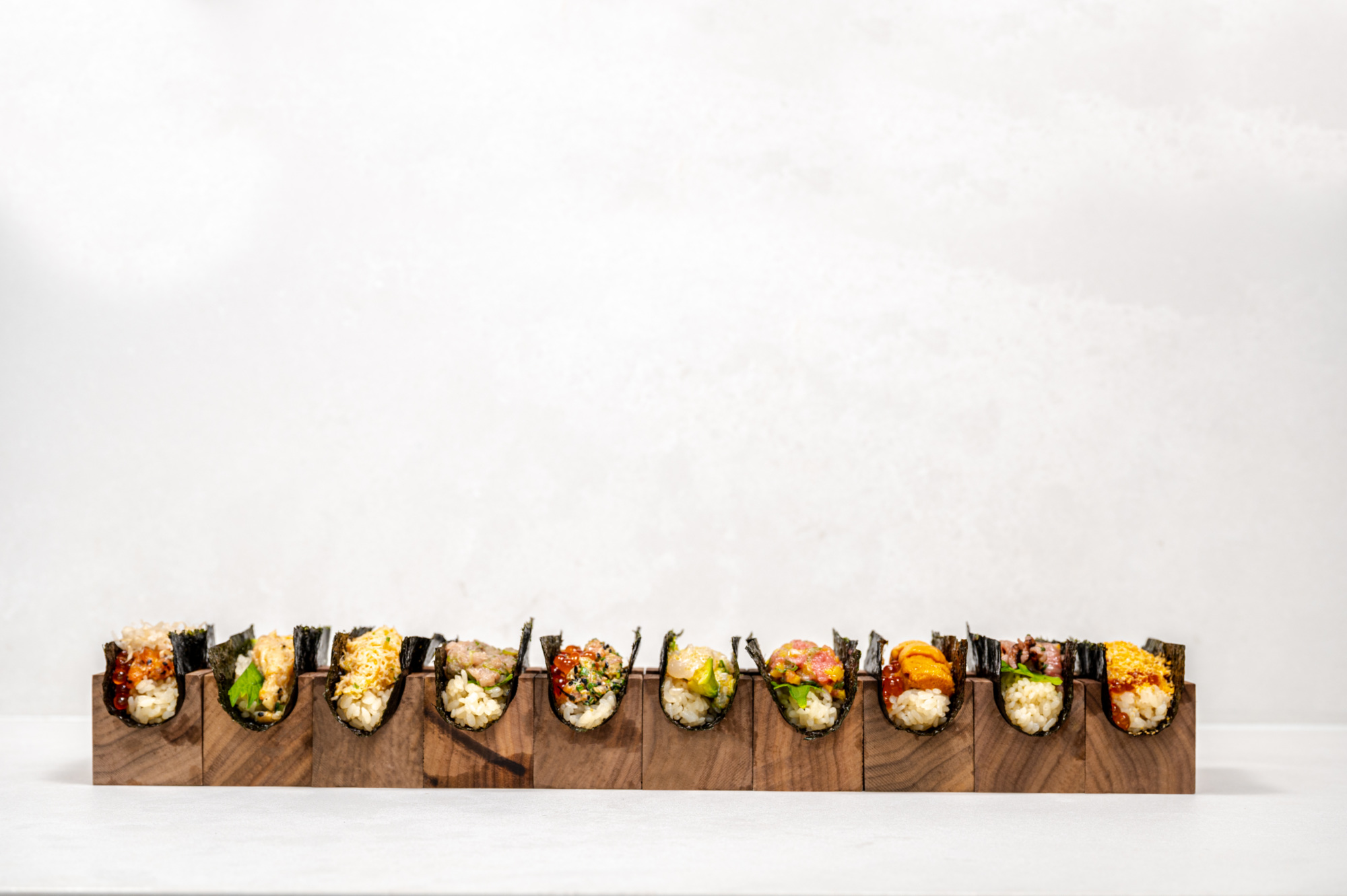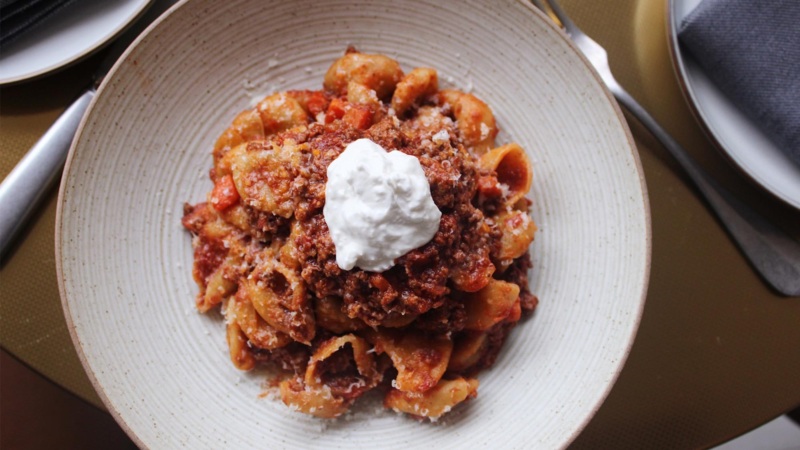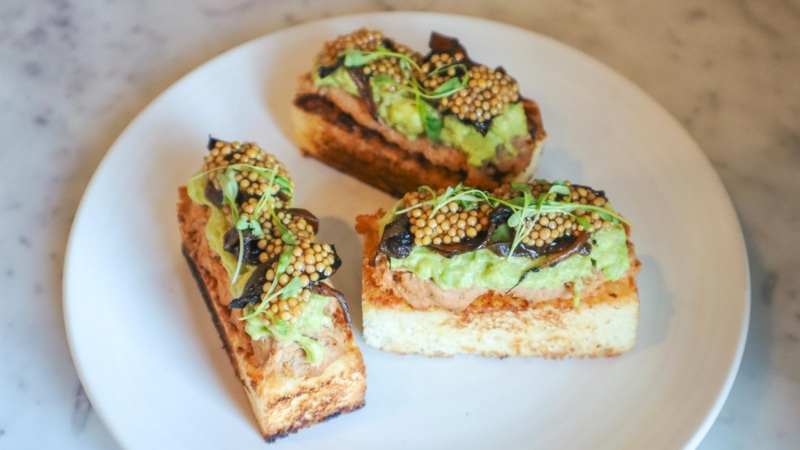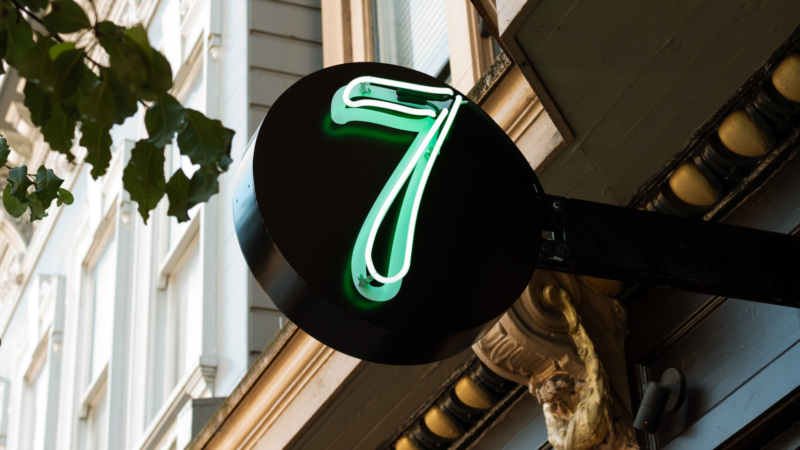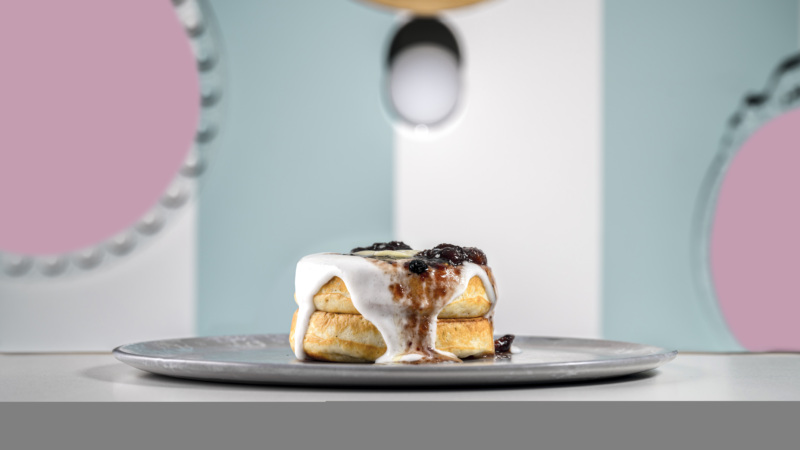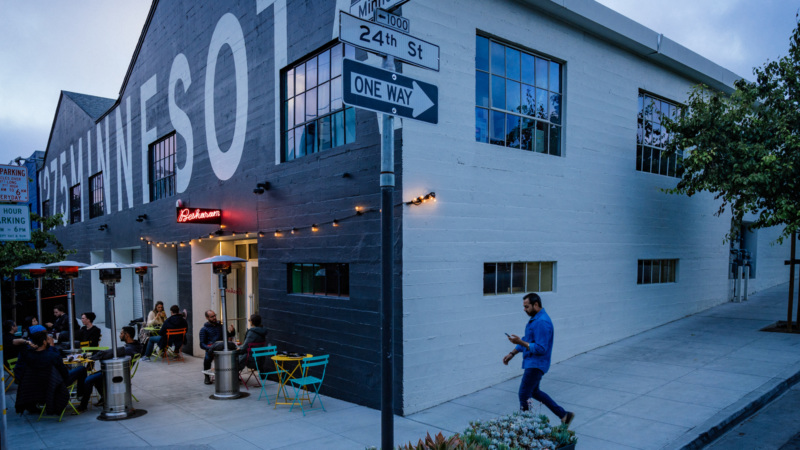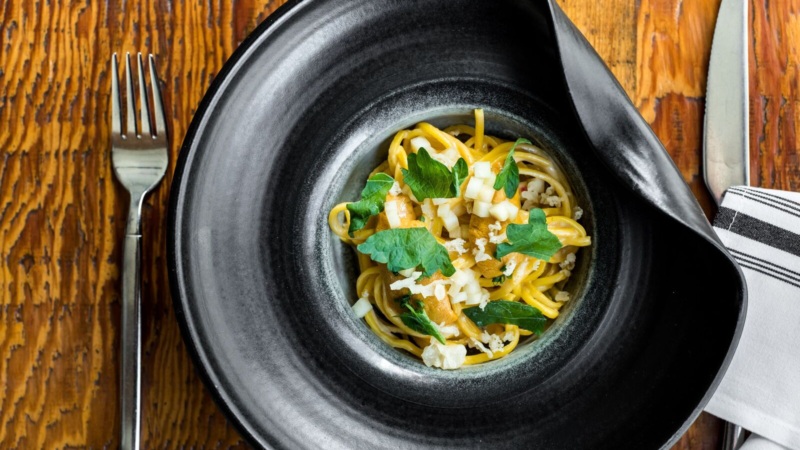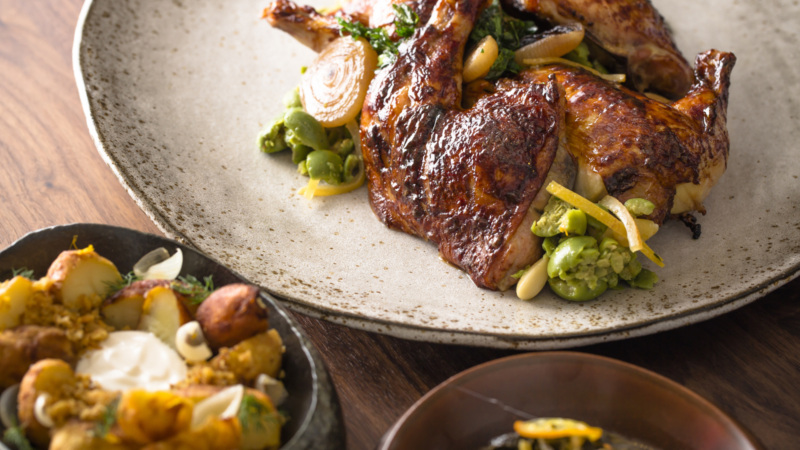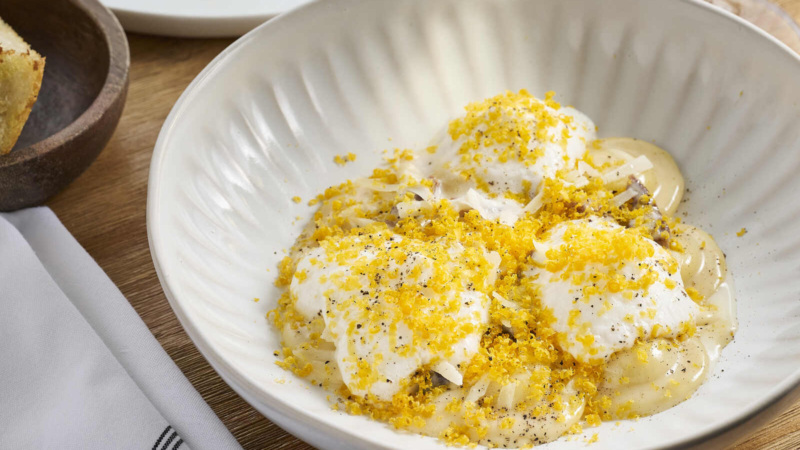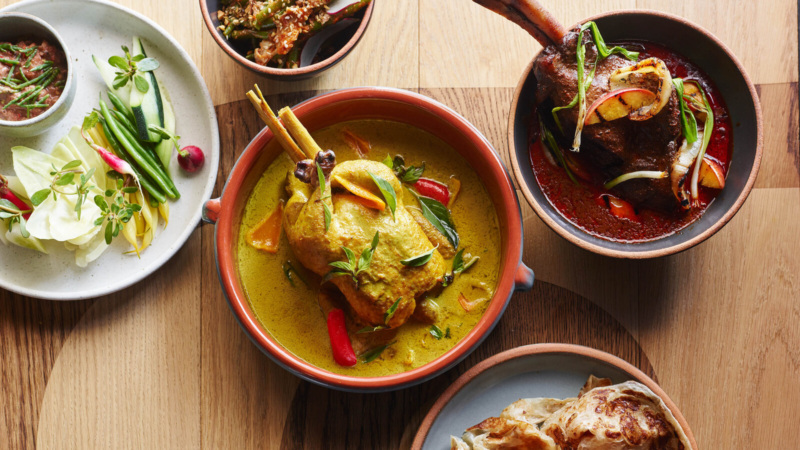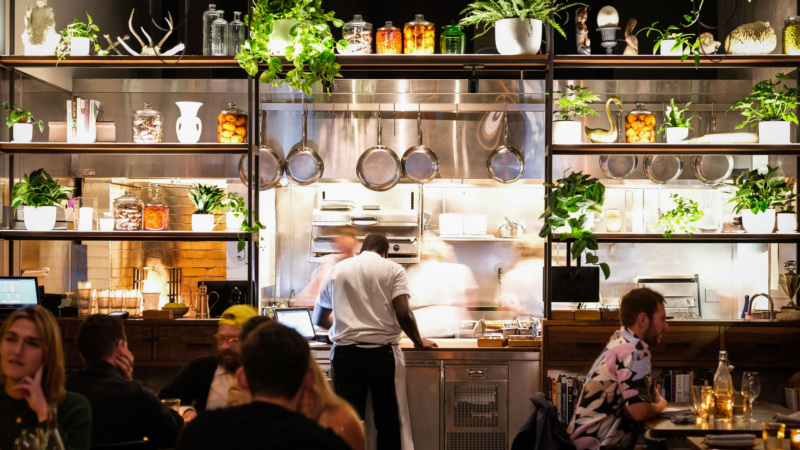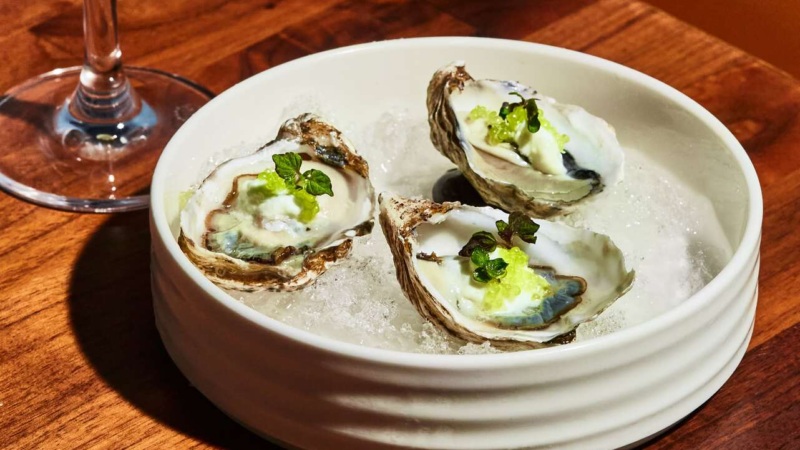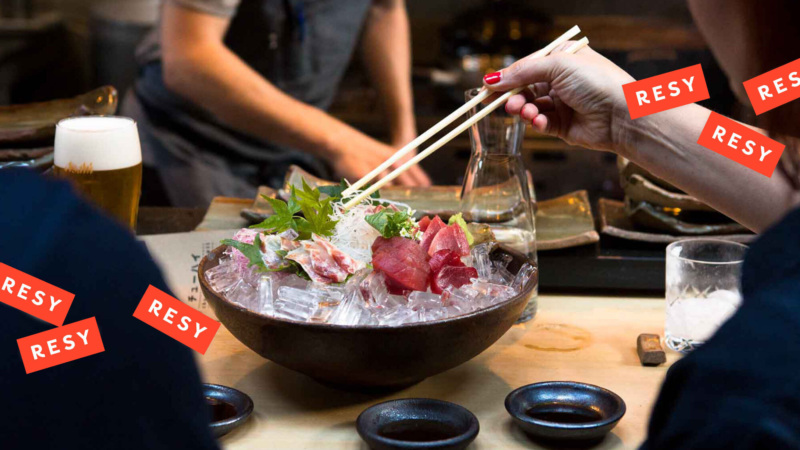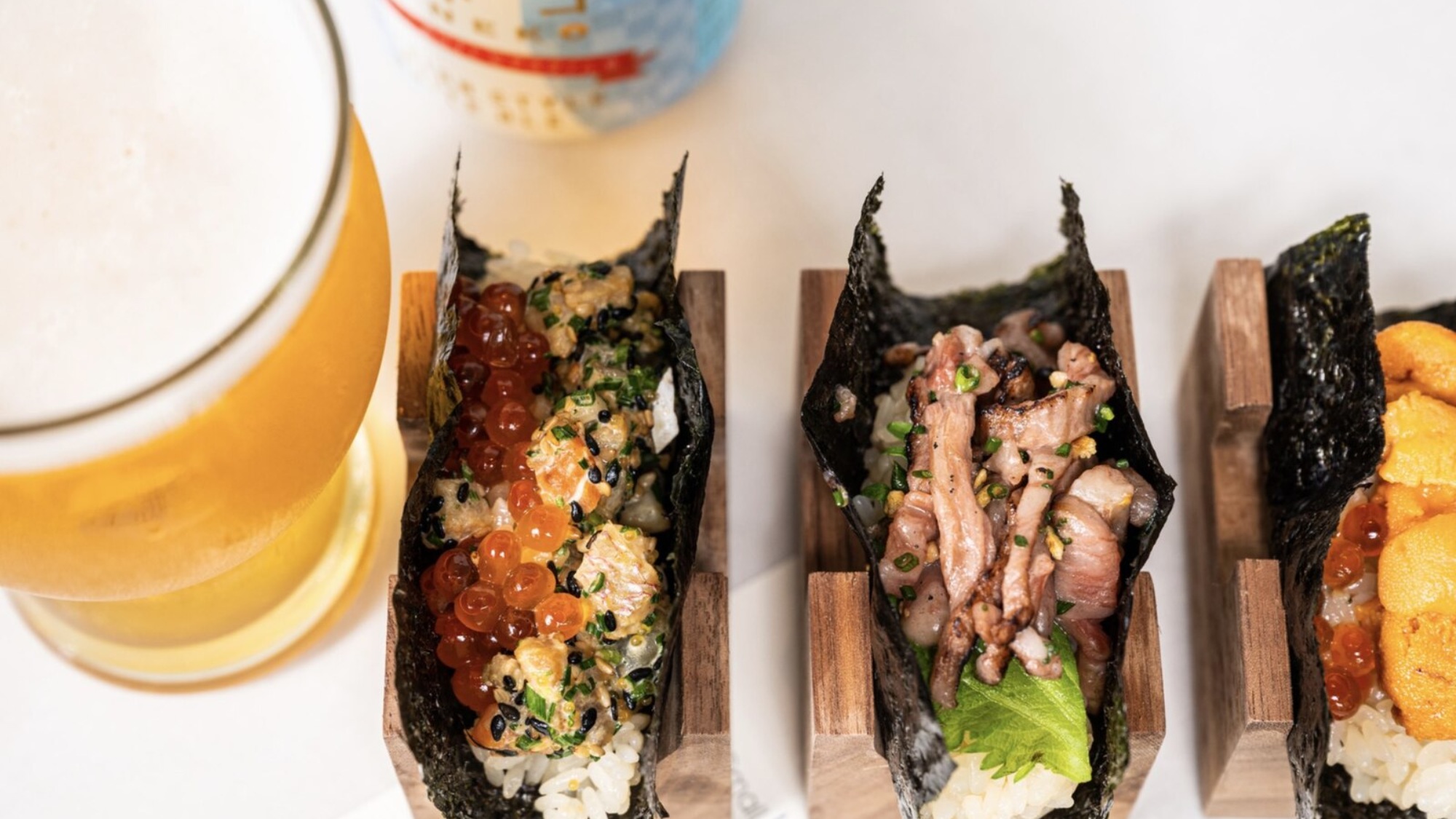
What to Order at Handroll Project in San Francisco
From the team behind the popular, Michelin-starred sushi spot Ju-Ni comes Handroll Project, which opened earlier this spring on Guerrero St in The Mission. As soon as its doors opened, the restaurant became an immediate hit, as diners would line up night after night for a chance to grab a seat at the counter to feast on uniquely prepared handrolls while sipping sake.
Though a seemingly instant success, the restaurant and concept was born by navigating the difficulty during the pandemic: “When COVID hit, we shut Ju-Ni down,” says chef-owner Geoffrey Lee. “Realizing we had to keep some revenue coming in and out, we pivoted to chirashi for takeout, and we started dabbling with handrolls as part of omakase boxes. People loved it.”
People loved the handrolls so much, they opened up an entire concept dedicated to it. “It gave me the confidence, and now we have support to do this more casual concept,” says Lee.
Below is a deep-dive into a few of the chef’s favorites at Handroll Project. Right this way.
Omar Mamoon is a San Francisco-based writer & cookie dough professional. Find him at @ommmar.
1. Albacore Tataki
“This dish really is an homage to the first Japanese restaurant I worked at,” says Lee, who worked at a sushi bar in college, where he first fell in love with the craft. The dish features six slices of albacore, lightly cured with salt which helps improve texture and intensify flavor. The fish sits in a pool of ponzu mixed with a soy sauce vinaigrette and garlic paste. “The acid balances well with richness of the albacore,” says Lee. “It’s a great way to start at Handroll Project.”
The fish is topped with thinly sliced onion, and is served with a few cherry tomatoes. “I like how it refreshes the palette in between bites.”
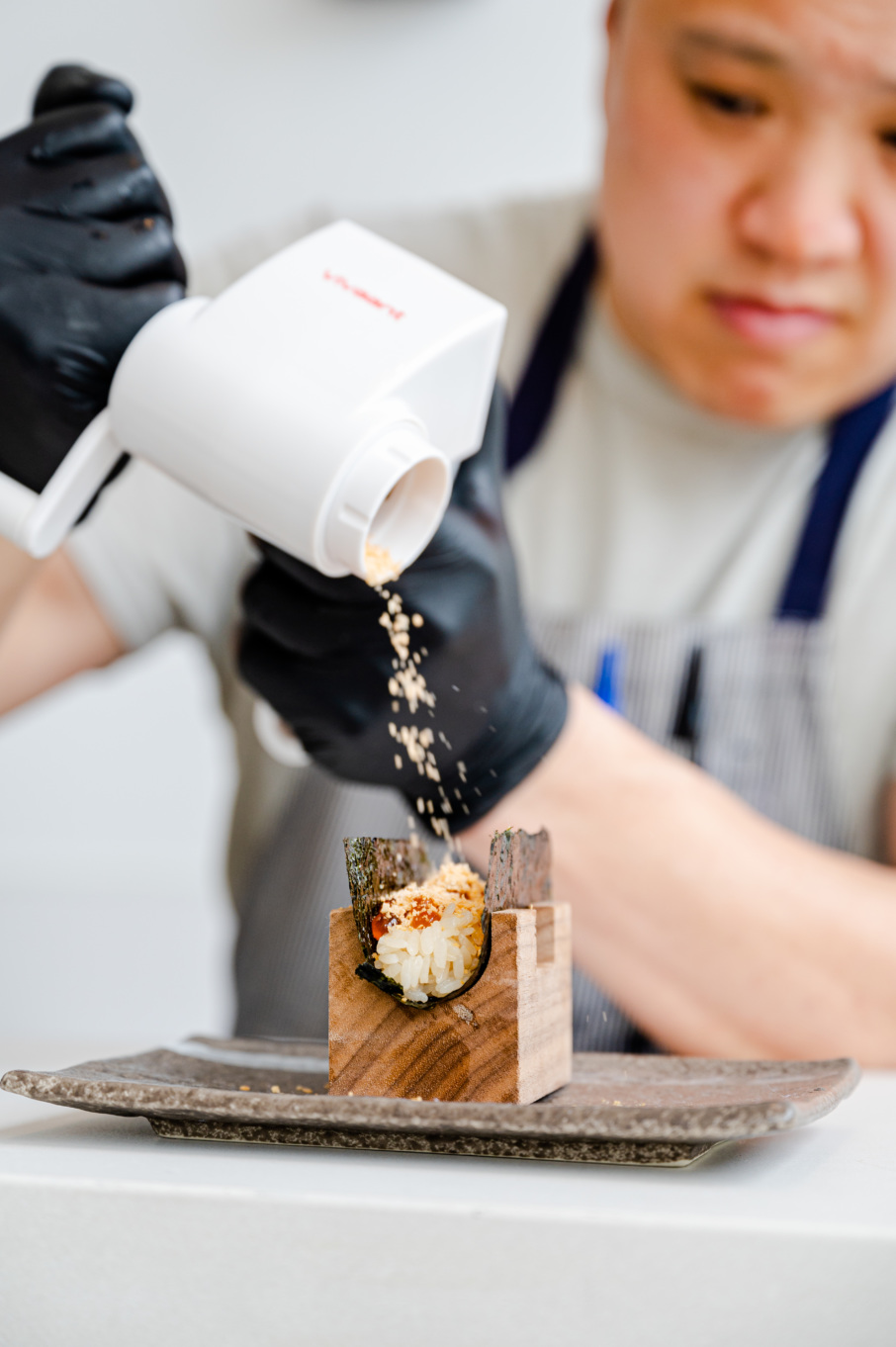

2. Ikura and Ankimo Roll
“The ikura and ankimo — that’s our dish at Ju-Ni,” says Lee. “I knew if we opened up Handroll Project, we’d have to pay homage to the signature dish that’s been on the menu every night since we opened Ju-Ni.”
To make the dish, the ikura (salmon roe) is cured with soy sauce, sake, and a touch of honey for sweetness. The ankimo (monkfish liver) is brought in whole, cleaned and cured in salt water to remove the irony taste, and soaked in milk before being steamed, which “alleviates the fishiness while leaving its fat,” according to Lee. The liver is then portioned, put in a superfreezer that reaches negative-63 degrees Celsius, and then shaved over the ikura handroll at the counter with a hand cranked device — it’s all very Instagrammable, and incredibly delicious.
“The roe is salty and a little bit sweet and juicy. And the pate is so finely grated it becomes creamy — the temp contrast is surprising,” says Lee.
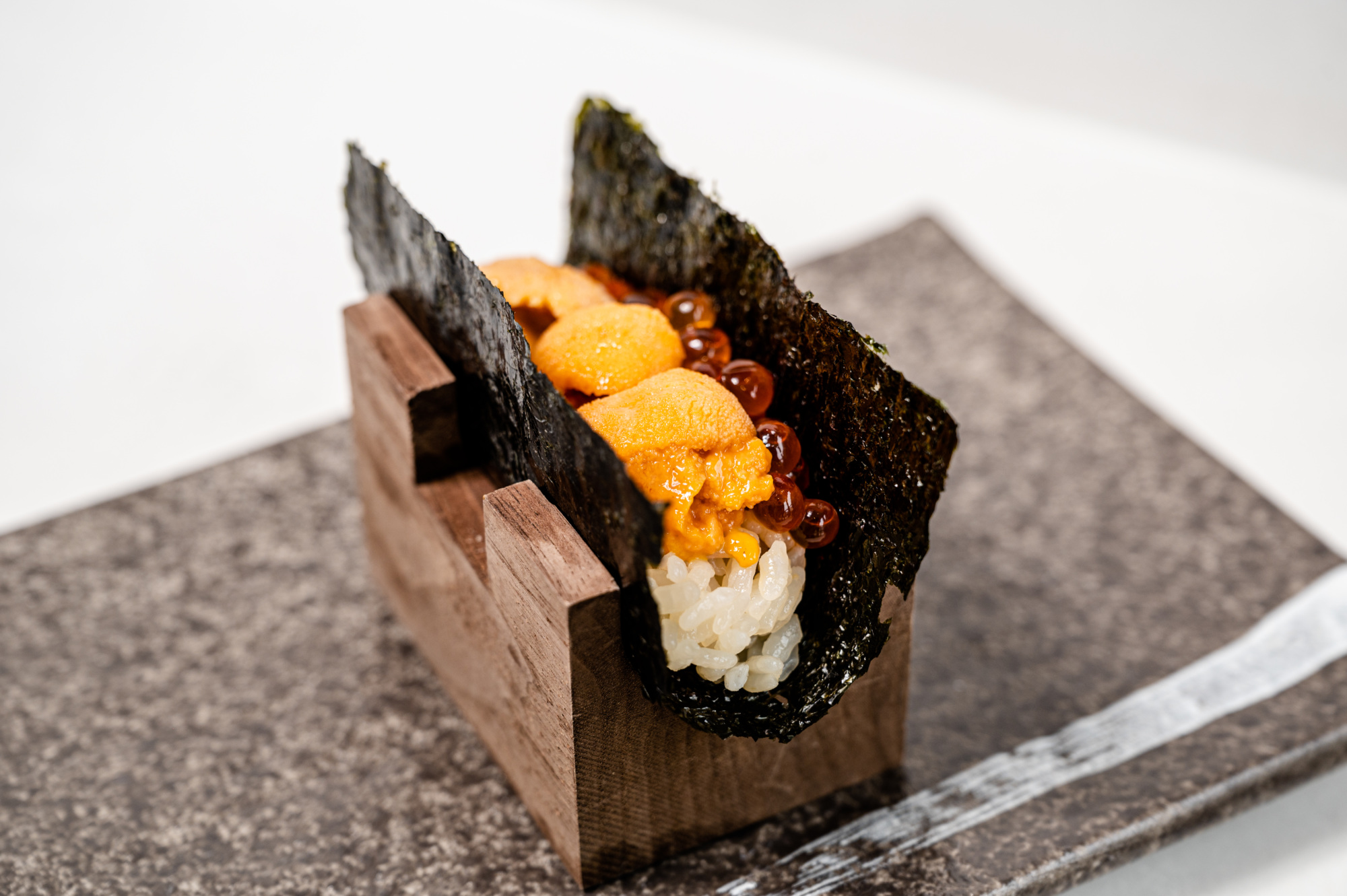

3. Smoked Uni and Ikura
For the uni and ikura roll, Handroll Project sources sea urchin from Japan. “I think the best uni comes from Hokkaido,” says Lee. “They’re a little bit smaller, and have a more consistently sweeter flavor and a better texture in comparison to, say, Mendocino uni.”
Lee then gently cold-smokes the uni with cherrywood chips to complement the sweetness. “We add just enough to coat the outside — it doesn’t overwhelm,” says Lee.
Lee fills a handroll with grain vinegar-seasoned, Japanese-style short-grained sushi rice, which he sources from a supplier in Sacramento. Though it’s difficult to cook with, Lee likes the texture: “It’s moist, but still al dente, and it holds together well when you pick it up.”
The handroll is finished with the house-cured ikura. “It’s a traditional pairing — creaminess, juiciness, sweetness, saltiness. But the smokiness is unique.”


4. Creamy Scallop
The creamy scallop handroll is the house favorite at Handroll Project. “At this point it’s the staff favorite and most reordered handroll,” says Lee.
The scallops are sourced from Hokkaido, of course, which Lee prefers for its sweeter flavor profile. They’re then cut into bite-size quarters then mixed with a miso aioli, which features a kewpie base spiked with yuzu for brightness. Naturally cured tobiko is mixed into the mix to provide a textural pop, as are slices of green onion, which provide a refreshing bite against the richness of the aioli. A slice of avocado adds color and creaminess.
The handroll is also finished with a few drops of 30-day aged soy sauce made in-house with imported Japanese soy sauce steeped with konbu, bonito, and mirin to create a deeper and more complex flavor.
5. A5 Wagyu Roll
It’s not all fish at Handroll Project. For the Wagyu roll, Lee sources A5 striploin from the Miyazaki prefecture with the highest possible BMS (beef marbling score). The meat is seared to a medium rare, chopped into thin slices, and seasoned with Japanese kelp salt, a touch of fresh lemon juice, some chopped chives for bite, and fried garlic for texture and flavor.
“I remember going out for yakiniku in Japan and they’d put a little garlic on the teppanyaki,” recalls Lee. “I wanted to incorporate that experience with the yakiniku into the handroll.”
At $16.50, this is the most expensive roll on the menu, but the real pro tip is to go with the 10-piece handroll set, which contains this roll in the mix.
